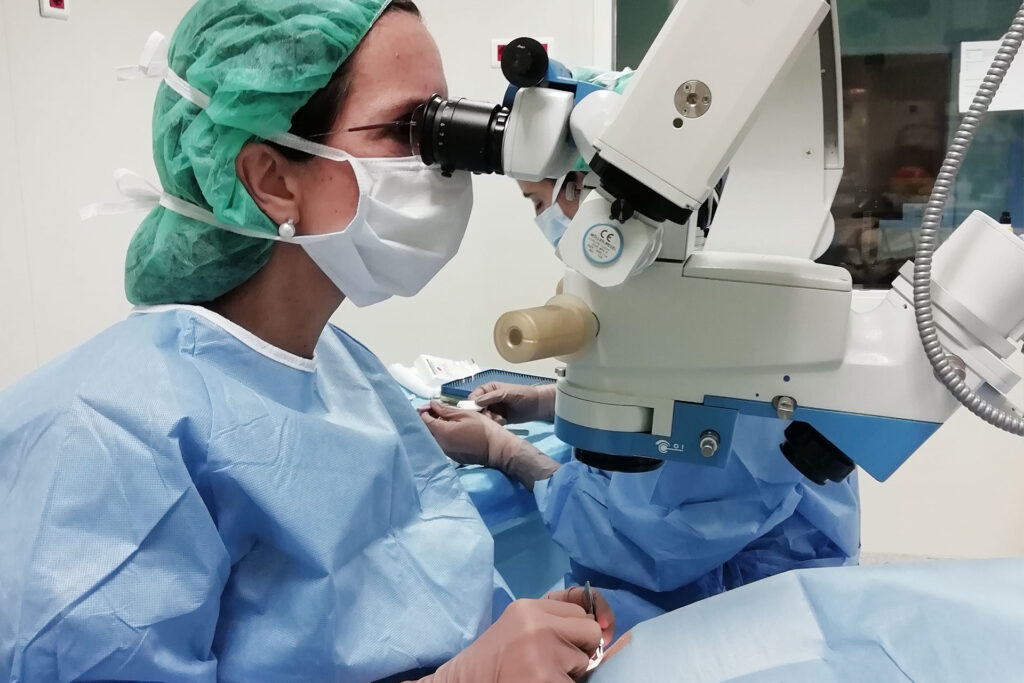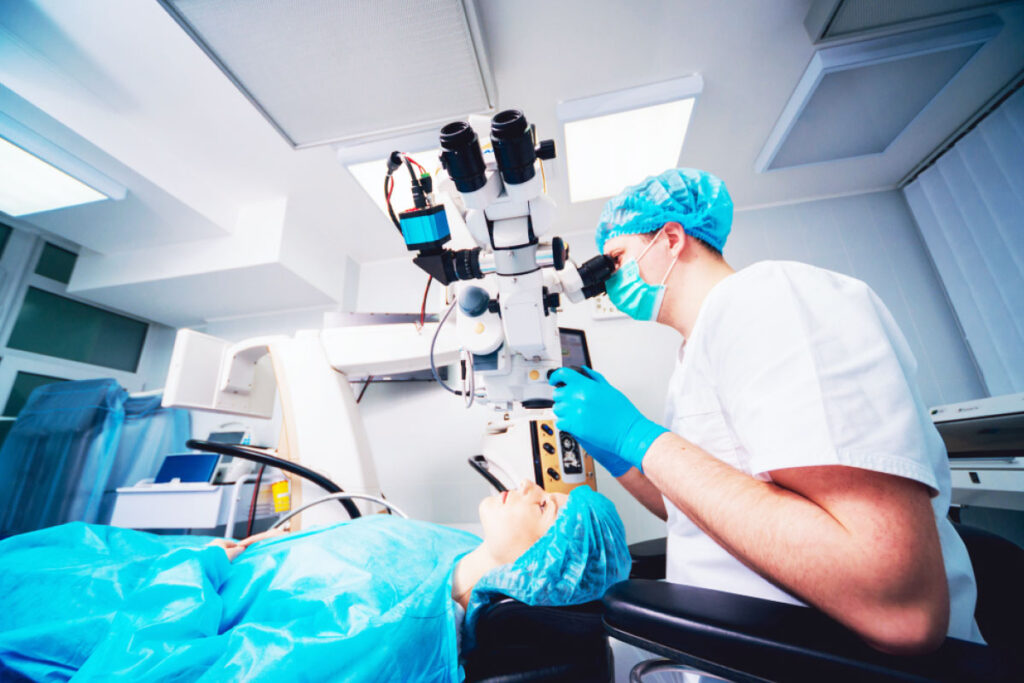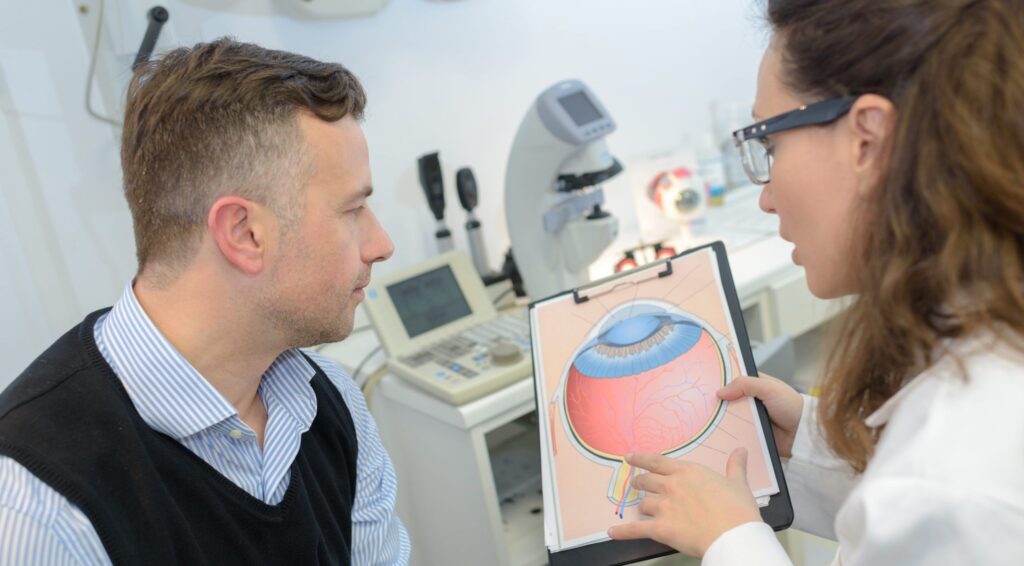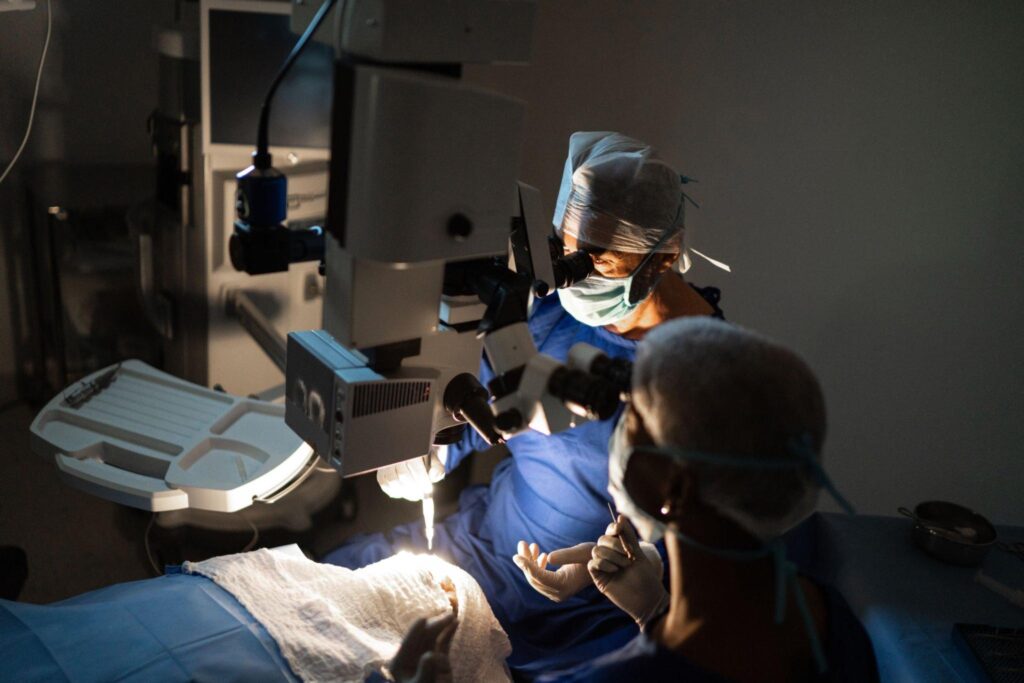In today’s world, clear vision is essential for a fulfilling life. Whether you’re exploring the great outdoors or simply reading a book, having laser focus can greatly enhance your experience. Vision correction has come a long way, thanks to advancements in technology and medical science.
In this comprehensive guide, we will delve into the various aspects of vision correction, with a particular focus on laser eye surgery Sydney. Buckle up as we embark on a journey to understand this groundbreaking procedure.
Understanding Vision Correction
The Science Behind Vision
Before we dive into the nitty-gritty of vision correction, it’s essential to understand how our eyes work. Vision is a complex process that involves several intricacies. Our eyes receive light through the cornea, which then passes through the lens to focus the light onto the retina. The retina converts the light into electrical signals and sends them to the brain, where they are interpreted as images.
Any disruption in this process can lead to vision problems. This is where vision correction techniques come into play, helping individuals regain clear vision and improve their quality of life.
But did you know that the human eye is capable of perceiving millions of colors? The retina contains specialized cells called cones, which are responsible for color vision. These cones are sensitive to different wavelengths of light, allowing us to see a wide spectrum of colors. From vibrant reds to soothing blues, our eyes enable us to experience the beauty of the world around us.

Furthermore, the eye is a marvel of engineering. The cornea, for example, acts as a protective layer for the eye and helps to focus incoming light. It is responsible for about two-thirds of the eye’s total focusing power. The lens, on the other hand, fine-tunes the focus by changing its shape, allowing us to see objects at different distances. This dynamic interplay between the cornea and lens ensures that our vision remains sharp and clear.
See Also: The Immediate and Long-Term Effects on Life After LASIK
Common Vision Problems and Their Causes
There are various vision problems that people may encounter. The most common ones include nearsightedness, farsightedness, astigmatism, and presbyopia. Nearsightedness, also known as myopia, refers to the inability to see objects clearly in the distance. On the other hand, farsightedness or hyperopia causes difficulty in focusing on close objects. Astigmatism is a condition where the cornea is not perfectly curved, resulting in blurred vision. Lastly, presbyopia is an age-related condition that affects the eye’s ability to focus on nearby objects.
These vision problems can occur due to a combination of genetic and environmental factors. Understanding the underlying causes is crucial in determining the most suitable vision correction method.
For instance, nearsightedness often develops during childhood and tends to run in families. It is believed to be influenced by both genetic factors and environmental factors such as excessive near work, like reading or using electronic devices for extended periods. On the other hand, presbyopia is a natural part of aging and is caused by the gradual hardening of the lens, making it less flexible.
It’s fascinating to think about how our genes and lifestyle choices can shape our vision. By understanding these factors, we can make informed decisions about vision correction options that best suit our individual needs.
The Evolution of Vision Correction Techniques
Throughout history, humans have explored various methods to correct their vision. From ancient civilizations using magnifying glasses to the invention of eyeglasses in the 13th century, vision correction has evolved significantly. In recent times, laser eye surgery has revolutionized the field of vision correction, offering a safe and effective solution for many individuals.
But how does laser eye surgery work? During the procedure, a laser is used to reshape the cornea, correcting its curvature and improving the eye’s ability to focus light. This precise and controlled reshaping allows for clearer vision without the need for glasses or contact lenses.
There are different types of laser eye surgery, each catering to specific vision problems. LASIK (Laser-Assisted in Situ Keratomileusis) is one of the most commonly performed procedures and is suitable for correcting nearsightedness, farsightedness, and astigmatism. Another type of laser eye surgery, known as PRK (Photorefractive Keratectomy), is often recommended for individuals with thinner corneas or those who are not suitable candidates for LASIK.
It’s worth noting that laser eye surgery is not the only vision correction option available today. Contact lenses, for example, provide a convenient and temporary solution for those who prefer not to undergo surgery. Additionally, advancements in lens technology have led to the development of multifocal and toric lenses, which can correct both nearsightedness and astigmatism.
As technology continues to advance, we can expect even more innovative and personalized vision correction techniques to emerge. The future of vision correction holds exciting possibilities, ensuring that individuals can enjoy optimal visual acuity and experience the world with clarity.

The Basics of Laser Eye Surgery
Laser eye surgery, also known as refractive surgery, is a procedure that reshapes the cornea to correct vision problems. The surgery aims to enhance the eye’s focusing power, enabling clearer vision without the need for glasses or contact lenses. It is a popular choice for individuals looking to improve their vision and reduce their dependence on visual aids.
When it comes to laser eye surgery, there are several types of procedures available today. One common procedure is LASIK (Laser-Assisted In Situ Keratomileusis), which involves creating a thin flap on the cornea and using a laser to reshape the underlying tissue. LASIK has gained popularity due to its quick recovery time and minimal discomfort during the procedure.
Another option is PRK (Photorefractive Keratectomy), where the outer layer of the cornea is removed before reshaping the tissue with a laser. Although the recovery time for PRK is longer compared to LASIK, it is a suitable choice for individuals with thin corneas or those who are not eligible for LASIK.
Additionally, LASEK (Laser-Assisted Subepithelial Keratectomy), Epi-LASIK (Epithelial Laser-Assisted In Situ Keratomileusis), and SMILE (Small Incision Lenticule Extraction) are also popular choices depending on individual needs and preferences. These procedures offer different techniques and benefits, catering to a wider range of patients.
The success and precision of laser eye surgery rely on advanced technology. Excimer lasers, which emit high-energy ultraviolet light, are used to precisely remove tissue from the cornea. These lasers can reshape the cornea with exceptional accuracy, catering to each patient’s unique requirements.
In addition to excimer lasers, advanced diagnostic tools play a crucial role in laser eye surgery. Corneal topography is a technique used to map the shape and curvature of the cornea, providing detailed information about its structure. This information helps surgeons plan the surgery and determine the optimal treatment approach for each patient.
Wavefront analysis is another advanced diagnostic tool used in laser eye surgery. It measures the eye’s optical aberrations, which are imperfections that can affect vision quality. By analyzing these aberrations, surgeons can create a customized treatment plan to address each patient’s specific visual needs.
Overall, laser eye surgery has revolutionized the field of vision correction. With its various procedures and advanced technology, individuals can achieve improved vision and a reduced reliance on glasses or contact lenses. If you are considering laser eye surgery, it is essential to consult with a qualified ophthalmologist who can assess your eligibility and guide you through the process.

Preparing for Laser Eye Surgery
Initial Consultation and Eye Examination
Before undergoing laser eye surgery, it is essential to consult with an experienced ophthalmologist. The initial consultation involves a thorough eye examination to assess your overall eye health, determine the extent of your vision problem, and evaluate your suitability for the procedure. During this examination, the surgeon will measure your corneal thickness, analyze your refractive error, and discuss any potential risks or complications.
During the eye examination, the ophthalmologist will use advanced diagnostic tools to evaluate the health of your eyes. These tools may include a slit lamp, which allows the doctor to examine the front and back of your eye in detail. They may also use a tonometer to measure the pressure inside your eyes and a retinal camera to capture images of your retina.
Additionally, the ophthalmologist may perform a comprehensive vision test to determine your current level of visual acuity. This test may involve reading letters on a chart, identifying objects at various distances, and assessing your ability to perceive colors accurately. By conducting these tests, the surgeon can gather valuable information about your eyes and tailor the laser eye surgery procedure to your specific needs.
Pre-Surgery Guidelines
Prior to the surgery, your surgeon will provide you with specific guidelines to follow. These may include avoiding contact lenses for a certain period before the surgery, stopping the use of specific medications, and refraining from applying creams or lotions around the eye area. Following these guidelines is essential to ensure the best possible outcome and minimize any potential risks.
In addition to these guidelines, your surgeon may also recommend certain lifestyle changes to optimize your eye health before the surgery. These changes could include quitting smoking, eating a balanced diet rich in nutrients beneficial for eye health, and practicing good eye hygiene. By making these adjustments, you can create an optimal environment for the surgery and enhance your overall eye health.
What to Expect on the Day of Surgery
The day of the surgery can be both exciting and nerve-wracking. It is important to remember that you are in the hands of skilled professionals who specialize in vision correction. During the procedure, you will be given numbing eye drops to keep you comfortable. The surgeon will then create a flap or remove the outer layer of the cornea, depending on the chosen procedure. The laser will then reshape the cornea to correct the refractive error. The entire process is usually quick, and you can expect to go home shortly after the surgery.
After the surgery, you may experience some discomfort or mild pain, but this can be managed with over-the-counter pain relievers and prescribed medications. It is crucial to follow the post-operative instructions provided by your surgeon to ensure proper healing and minimize the risk of complications. These instructions may include using prescribed eye drops, avoiding strenuous activities, and attending follow-up appointments to monitor your progress.
It is normal to experience fluctuations in your vision immediately after the surgery. Your vision may initially be blurry or hazy, but it will gradually improve over time. It is important to be patient and allow your eyes to heal naturally. In most cases, patients notice significant improvements in their vision within a few days or weeks after the surgery.
During the recovery period, it is crucial to protect your eyes from potential irritants and trauma. Your surgeon may recommend wearing protective eyewear, such as sunglasses, to shield your eyes from bright lights and harmful UV rays. It is also important to avoid rubbing or touching your eyes, as this can interfere with the healing process.
Remember, laser eye surgery is a life-changing procedure that can significantly improve your vision and quality of life. By following the necessary precautions and guidelines, you can increase the chances of a successful outcome and enjoy the benefits of clear and crisp vision for years to come.
The Laser Eye Surgery Procedure
Step-by-Step Guide to the Surgery
The laser eye surgery procedure involves several steps, each meticulously executed to ensure optimal results. Firstly, the surgeon will prepare your eye by cleaning and sterilizing the area. Next, a specialized instrument will create a thin corneal flap or remove the outer layer of the cornea, exposing the underlying tissue. The excimer laser will then reshape the cornea based on the precise measurements taken during the pre-operative evaluation. After the laser reshaping, the corneal flap is carefully repositioned or allowed to heal naturally, depending on the chosen technique. Protective shields may be placed over your eyes to prevent accidental rubbing or injury.
Post-Surgery Care and Recovery
After the surgery, it is crucial to follow the post-operative instructions provided by your surgeon. This may include using prescribed eye drops, avoiding activities that can strain the eyes, and attending follow-up appointments for regular check-ups. The recovery period varies from person to person, but most individuals experience significant improvement in their vision within a few days or weeks.
Potential Risks and Complications
As with any surgical procedure, laser eye surgery carries certain risks. These risks may include dry eyes, glare, halos, under-correction, over-correction, or infection. However, it is important to note that the overall satisfaction rate for laser eye surgery is high, with the majority of patients experiencing improved vision and a better quality of life.
As you can see, laser eye surgery offers a remarkable solution for vision correction. With the help of advanced technology, skilled surgeons, and proper pre and post-operative care, many people can bid farewell to their glasses or contact lenses. If you’re considering laser eye surgery, it is crucial to consult with an experienced ophthalmologist who can guide you through the process and determine the best approach for your unique needs. Embrace laser focus and embark on a journey to successful vision correction!

